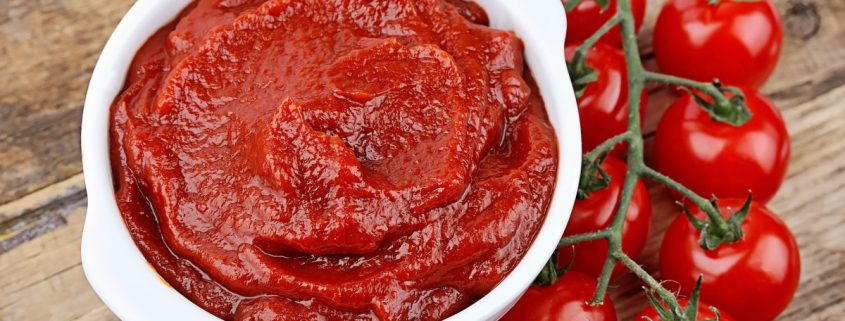Tomato Paste Processing line
One of the most important food products in Iranian cuisine is tomato paste. Therefore, food industry activists may be interested in launching a tomato paste processing line. In this article, we will cover various stages in the processing of tomato paste.
A brief explanation about tomato paste:
The great thing about tomato paste is that it requires a lot of tomatoes to make. As we mentioned in our blog post about irrigation practices, tomatoes contain approximately 95% water and 5% solids/sugars. Next time you reach for that can of tomato puree, check the concentration percentage. Most likely, the label will read “double concentrate” and the product will contain about 28% solid material (also known as Brix). So if you’re making paste, you will need 5.6kgs of tomatoes with a 5% sugar content to make 1kg of tomato paste at 28% Brix.
Tomato paste processing facilities require a constant supply of fresh tomatoes, and it is vitally important that the tomato processing line constantly operates at maximum capacity. If capacity drops below a certain threshold, or even worse, if paste cannot be made all day every day, then production has to stop completely while all the machinery is cleaned. This can lead to a lot of wastage, both of the fresh tomatoes waiting in trucks outside, and the tomatoes in the facility in various stages of processing.
Different steps in processing tomato paste line
For processing tomato paste line, you should pass this steps.
1-Receiving:
Fresh tomatoes arrive at the plant in trucks, which are directed to the offloading area. An operator, using a special tube or boom, pipes a vast quantity of water into the truck, so that the tomatoes can flow out from the special opening at the rear of the trailer. Using water allows the tomatoes move into the collection channel without being damaged.

2-Sorting:
More water is continuously pumped into the collection channel. This water carries the tomatoes into the roller elevator, rinses them, and conveys them to the sorting station. At the sorting station, staff remove material other than tomatoes (MOT), as well as the green, damaged and discolored tomatoes. These are placed on a reject conveyor and then collected in a storage unit to be taken away. In some facilities, the sorting process is automated.

3-Chopping:
The tomatoes suitable for processing are pumped to the chopping station where they are chopped.
4-Juice Extraction:
The pulp (consisting of fiber, juice, skin and seeds) is then pumped through an extraction unit composed of a pulper and a refiner – these are essentially large sieves. Based on customer requirements, these mesh screens will allow more or less solid material to pass through, to make a coarser or smoother product, respectively.
Typically, 95% of the pulp makes it through both screens. The remaining 5%, comprised of fiber, skin and seeds, considered waste and is transported out of the facility to be sold as cattle feed.
5-Holding Tank:
At this point the refined juice is collected in a large holding tank, which constantly feeds the evaporator.
6-Evaporation:
Evaporation is the most energy-intensive step of the whole process – this is where the water is extracted, and the juice that is still only 5% solid becomes 28% to 36% concentrated tomato paste. The evaporator automatically regulates juice intake and finished concentrate output. The operator only has to set the Brix value on the evaporator’s control panel to determine the level of concentration.
As the juice inside the evaporator passes through different stages, its concentration gradually increases until the required density is obtained in the final “finisher” stage. The entire concentration/evaporation process takes place under vacuum conditions, at temperatures significantly below 100°C.

7-Aseptic Filling:
Most facilities package the finished product using aseptic bags, so that the product in the evaporator never comes into contact with air until it reaches the customer. The concentrate is sent from the evaporator directly to an aseptic tank – it is then pumped at high pressure through the aseptic sterilizer-cooler (also called a flash cooler) to the aseptic filler, where it is filled into large, pre-sterilized aseptic bags. Once packaged, the concentrate can be kept up to 24 months.
Some facilities choose to package their finished product under non-aseptic conditions. This paste must go through an additional step after packaging – it is heated to pasteurize the paste, and then kept under observation for 14 days before being released to the customer.

Installing tomato paste processing line
If you are interested in owning a tomato paste factory, you can contact the Shabchare center for getting more advice on installing this factory.
Also, if you need machinery for tomato paste processing line, we can also supply the machines you want.








Leave a Reply